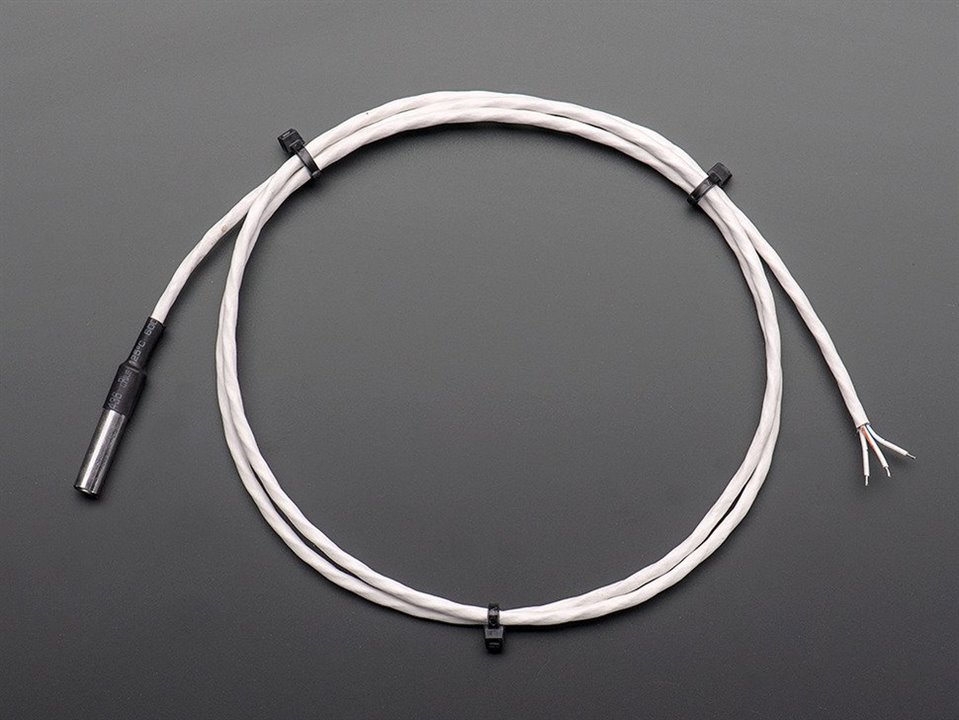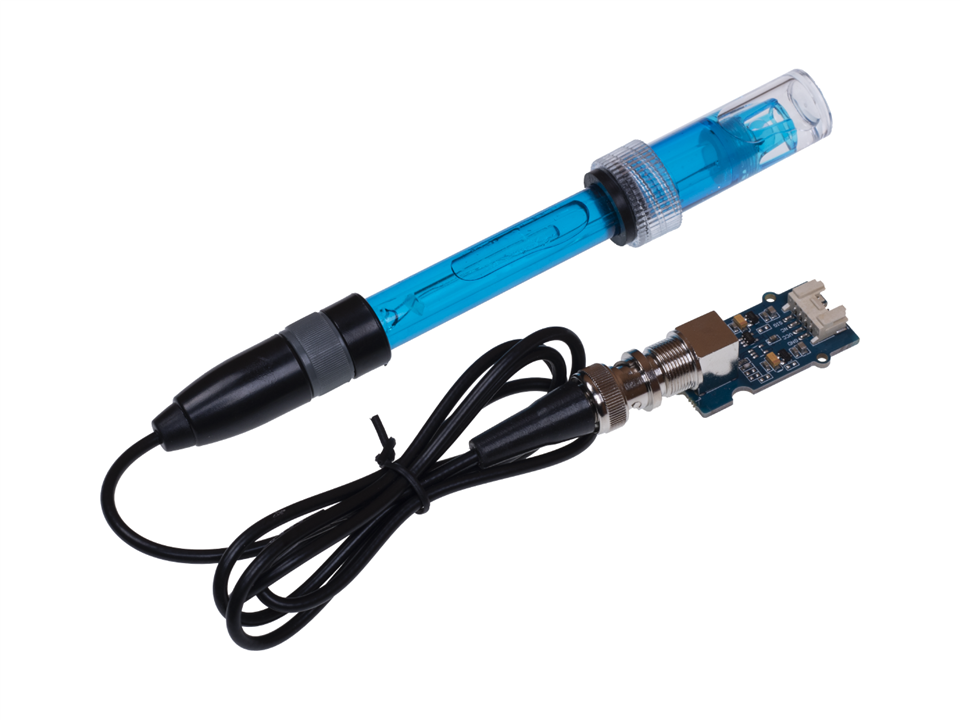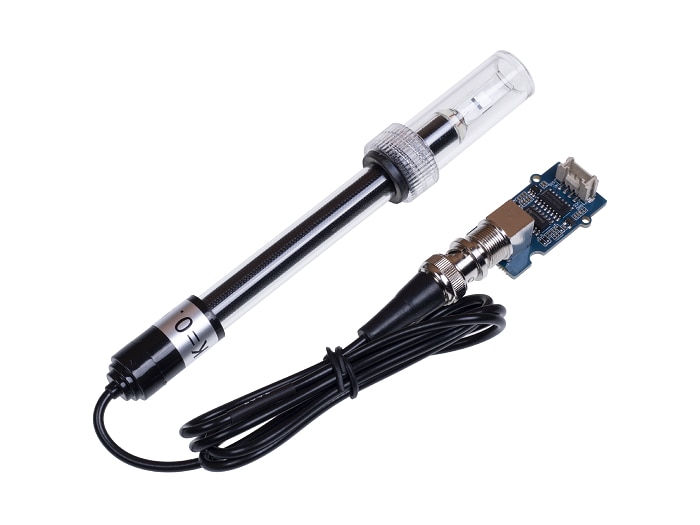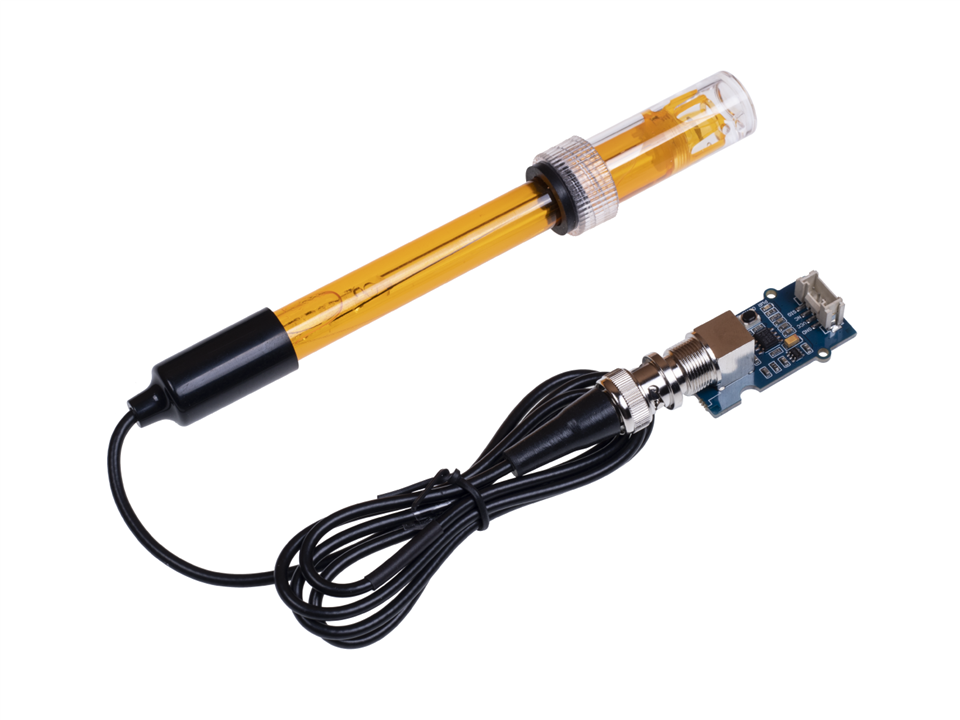In my previous blog, I discussed the most important water parameters for a biofloc tank. I explained about temperature, pH level, ORP, and EC. In this blog, I will discuss the related sensors I am going to use for my project.
Temperature Sensor
For measuring the temperature I will use Adafruit High Temp Waterproof DS18B20 Digital temperature sensor. This is a pre-wired and waterproofed version of the DS18B20 sensor made with a PTFE wire cable. Handy for when you need to measure something in wet conditions. This sensor is a little more expensive than the other waterproof version we have with a PVC cable because this one can be used up to 125°C - the limit of the sensor itself. Because the sensor signal is digital, you don't get any signal degradation even over long distances! These 1- wire digital temperature sensors are fairly precise (±0.5°C over much of the range) and can give up to 12 bits of precision from the onboard digital-to-analog converter. They work great with any microcontroller like Arduino using a single digital pin, and you can even connect multiple ones to the same pin, each one has a unique 64-bit ID burned in at the factory to differentiate them. Usable with 3.0-5.0V systems. The only downside is they use the Dallas 1-Wire protocol, which is somewhat complex, and requires a bunch of code to parse out the communication but you can get started by using the Dallas Temperature Control Arduino library which requires also the OneWire Library.

You can buy the kit from here.
PH Sensor
The PH sensor measures the hydrogen-ion activity in water-based solutions, we usually use it to measure the PH of a liquid. It is widely used in the chemical industry, the pharmaceutical industry, the dye industry, and scientific research where acidity and alkalinity testing is required. In this project, I am going to use the Grove E-201C pH sensor Kit that supports both 3.3V and 5V systems with a BNC probe interface. The sensor kit comes with a standard buffer solution for calibration purposes and the sensor must be calibrated with the solution for a reliable and accurate measurement.

You can buy the kit from Seeedstudio.com using the link: https://www.seeedstudio.com/Grove-PH-Sensor-Kit-E-201C-Blue-p-4577.html
Details of the sensor with the example code and library are available here.
EC Sensor
The electrical conductivity sensor (EC sensor) measures the electrical conductivity in a solution which usually used for aquaculture and water quality testing. I will use Grove EC sensor for my project. The Grove - Electrical Conductivity Sensor is specially designed for a low-cost system with a relatively high accuracy that can cover most applications. The Grove connector and BNC probe interface make it easy to use and very suitable for Arduino and Raspberry Pi project. This Kit includes an EC probe and a driver board, and the driver board supports both 3.3V and 5V systems.

You can buy the kit from Seeedstudio.com using the link: https://www.seeedstudio.com/Grove-PH-Sensor-Kit-E-201C-Blue-p-4577.html
Details of the sensor with the example code and library are available here.
ORP Sensor
An Oxidation Reduction Potential (ORP) Sensor measures the activity of oxidizers and reducers in an aqueous solution, it measures the ability of a lake or river to cleanse itself or break down waste products. I will use the Grove ORP sensor for my project. The Grove OPR sensor works for both 3.3V and 5V systems, the Grove connector and BNC probe interface make it easy to use and very suitable for Arduino and Raspberry Pi projects.

You can buy the kit from Seeedstudio.com using the link: https://www.seeedstudio.com/Grove-PH-Sensor-Kit-E-201C-Blue-p-4577.html
Details of the sensor with the example code and library are available here.
Arduino MKR WAN 1300
For interfacing the sensors and collecting the water parameters a microcontroller is required. I will use Arduino MKR WAN 1300 board for collecting the sensor data and transmitting the data to an internet gateway using LoRa. Another Arduino MKR board will be used to receive the data using LoRa and upload the data to the cloud.

Arduino MKR WAN 1300 has been designed to offer a practical and cost effective solution for makers seeking to add LoRa® connectivity to their projects with minimal previous experience in networking. It is based on the Atmel SAMD21 and a Murata CMWX1ZZABZ Lo-Ra module.
The design includes the ability to power the board using two 1.5V AA or AAA batteries or external 5V. Switching from one source to the other is done automatically. A good 32 bit computational power similar to the MKR ZERO board, the usual rich set of I/O interfaces, low power LoRa® communication and the ease of use of the Arduino Software (IDE) for code development and programming. All these features make this board the preferred choice for the emerging IoT battery-powered projects in a compact form factor. The USB port can be used to supply power (5V) to the board. The Arduino MKR WAN 1300 is able to run with or without the batteries connected and has limited power consumption.
Buy from Official Arduino Store: https://store-usa.arduino.cc/products/arduino-mkr-wan-1300-lora-connectivity
3W Solar Panel
This is a custom solar panel from Seeedstudio I will use, which mates directly with many development boards and has a high efficiency at 16%. The unit has a clear epoxy coating with hard-board backing. Robust sealing for outdoor applications!

Details are here.
5V Solar Power Manager
Solar Power Manager 5V is a small power and high-efficiency solar power management module designed for 5V solar panel. It features as MPPT (Maximum Power Point Tracking) function, maximizing the efficiency of the solar panel. The module can provide up to 900mA charging current to 3.7V Li battery with USB charger or solar panel. The ON/OFF controllable DC-DC converters with 5V 1A output satisfies the needs of various solar power projects and low-power applications. The module also employs various protection functions for battery, solar panel and output, which greatly improves the stability and safety of your solar projects.

You can buy the module from here: https://www.dfrobot.com/product-1712.html
